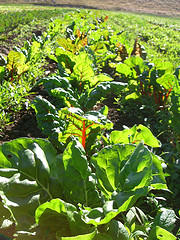You know that vegetables are important for your health and well being, but there are a number of facts that many people don’t know about getting your daily greens. These helpful facts from the USDA will give you some insight into the world of vegetables.
Vegetables are organized into five subgroups.
Based on their nutritional content, vegetables are categorized as either dark green vegetables, starchy vegetables, red and orange vegetables, beans and peas, and other vegetables.
You can get your daily veggies from a variety of sources.
Fresh vegetables are the most obvious choice, but cooked, frozen, canned, dried/dehydrated, and 100% vegetable juices are also valid sources.
Eating the proper amount of vegetables can prevent certain diseases.
Getting enough vegetables can help to prevent heart disease, stroke, certain cancers, obesity, type 2 diabetes, and may decrease kidney stones and bone loss.
Half of your plate should be made up of veggies.
While the exact recommended daily intake varies from person to person, filling half of your plate with vegetables is a good general rule.
Vegetables that are easy to prepare will help you eat them more often.
Things like microwavable frozen veggies or bags of pre-made salad greens are good examples.

 Equal Housing Opportunity
Equal Housing Opportunity